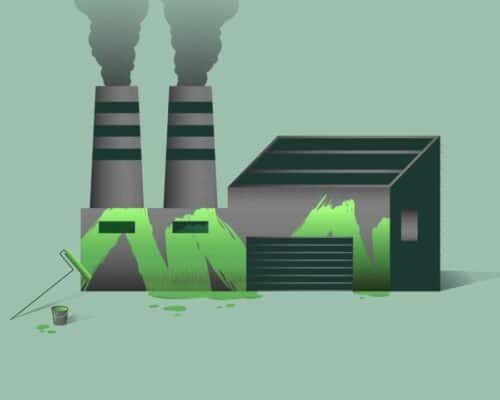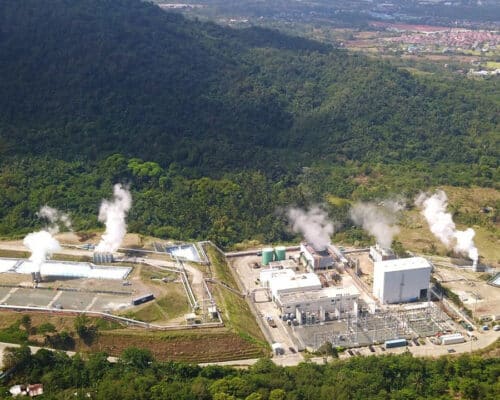Can Australia Finally Tackle Climate Change?
Photo by Anna LoFi via ShutterStock
31 October 2022 – by Heba Hashem
Listen on: Apple Podcasts, Spotify, Google Podcasts and Stitcher
Australia’s relationship with climate change has been a turbulent one. Climate change in Australia was not a popular topic. The country has repeatedly resisted international pressure to strengthen its climate targets. Despite rising emissions and devastating natural disasters, it refused to join the global methane pledge last year.
While the new Albanese government recently passed a major climate action reform, Australia continues to rely on fossil fuels and support new oil and gas exploration projects.
“There’s always been this precious place that Australia’s fossil fuels – which back then were coal but now are just as much natural gas – have in how we deal with this issue,” Richie Merzian, director for the climate and energy program at the Australia Institute, said in a podcast interview with Energy Tracker Asia.
World’s Biggest Polluter
There have been moments where Australia has managed to act in the global interest, but for the most part, it has had a history of protecting its fossil fuel interests. Today, Australia is the world’s biggest polluter when it comes to coal use, with per-capita emissions from coal-fired generation four times larger than the global average.
Impacts of Climate Change in Australia and Extreme Weather Events Steer Australian Politics
Decades of high greenhouse gas emissions (GHG) and climate inaction have led to more frequent natural disasters. Australia has suffered extreme weather events in the last few years, from catastrophic bushfires and deadly floods to severe heatwaves and droughts.
These economic and social costs and climate change impacts have played a significant role in shifting the public conversation. And it eventually steered Australian politics towards climate action.
The economics have also changed. “Renewables are now the cheapest way we can make power in Australia…Many businesses have taken on net-zero pledges. A great example is the Business Council, the lobby for big industry in Australia,” said Merzian.
In addition to the changing economics, several independent candidates recently stood up for climate change and the environment, seven of whom won seats, according to Merzian. The final push was the mounting international pressure on Australia to level up its climate change policy.
All of these factors culminated in an election in May 2022, where climate change was at the top of the agenda. As a result, Australia now has a government that wants to transform the country into a renewable energy superpower.
Fossil Fuel Exports Clash with Climate Change Ambitions
Despite this newfound shift, Australia is still a major fossil fuel user and exporter. Although the country claims that it wants to reduce emissions, its ambitions don’t match up with reality. For instance, the government recently launched its first offshore petroleum exploration licensing round for 2022. With that, it opened up around 46,758 square kilometres of space for polluting activity.
“Australia is the third-largest fossil fuel exporter in the world after Russia and Saudi Arabia, according to our research. If you look at the emissions embedded in that coal and gas, it’s more than twice the size of what Australia emits domestically.
“You can’t be a renewable energy superpower if you’re still a fossil fuel superpower,” said Merzian, who previously represented the Australian government at the UN climate change summit.
Addressing Global Warming: A Moral Responsibility for Australia
Australia is currently the world’s 14th-highest GHG emitter on a global scale. Although the country accounts for 0.33% of the world population, it contributes to just over 1% of global emissions. Given the country’s global carbon footprint, it has an “oversized role” to play in tackling climate change, noted Merzian.
The problem also lies in the United Nations Framework Convention on Climate Change (UNFCCC) system. Countries and parties to the UNFCCC are only responsible for their territorial and domestic emissions, not for what they export.
“Yes, your legal responsibility is what you have at home. But at the same time, your moral responsibility is what you send to the world. And you can’t be a credible world leader if you’re still exporting the problem and growing that,” said Merzian.
Moreover, Australia is pushing to host COP29 for the first time in 2024. Yet, the government has 114 new fossil-fuel projects in the pipeline – over 70 coal and 40 gas. “That can’t continue. We know the IEA pathways. There’s no space for that investment if we’re going to keep to 1.5 degrees Celsius of global warming,” said Merzian.
Australia’s Environmental Law Ignores Greenhouse Gas Emissions
Another issue is that Australia’s main environmental law does not consider GHG emissions when fossil fuel projects are being proposed. This is a major hole in the Environmental Protection and Biodiversity Conservation Act (EPBC).
Australia’s current Labour Party has already ruled out the demand to ban new coal and gas projects. But it hasn’t ruled out an amendment to the EPBC, as suggested by the Australian Greens party.
Under the proposed “climate trigger policy“, the government would need to assess future projects based on their emissions. “If they pollute more than 100,000 tonnes of emissions, they don’t get the green light,” said Merzian. If a project’s emissions are 25,000 to 100,000 tonnes, the government must consider this when deciding whether to approve it.
Australia’s Big Plans for Developing Renewable Manufacturing Capacity
There are other promising signs. For example, Australia now wants to become a renewable energy technology manufacturing hub. Such industrialisation is crucial for meeting its climate targets. But, Australia’s desire to combat China’s dominance over the global solar supply chain is also driving this.
This was one of the messages Minister of Climate Change and Energy Chris Bowen conveyed during his recent speech in the US. He also said that to achieve Australia’s emissions-reduction target, the country must install about forty 7-megawatt wind turbines annually until 2030. For solar, it must install more than 22,000 five-hundred-watt panels daily – and 60 million by 2030.
“We’ve missed out on opportunities in the past. Now, Australia has the opportunity to manufacture so many of these solutions to the climate. We have all the rare earths and minerals. We have all the ingredients you need to build batteries. We’ve got ample land to take renewables and turn it into green hydrogen if we really think that’s a legitimate tech,” said Merzian.
“All of this is lining up for Australia to potentially build the solutions and live that mantra put forward by the prime minister to be a renewable energy superpower. But it does have to come at the trade-off of being a fossil fuel superpower,” said Merzian.
A New Attitude to Climate Change at COP27
Now that Australia’s first climate change legislation has passed the federal parliament in a decade, the country is expected to take a different approach at COP27.
Last year at COP26, Australia drew criticism for hosting a fossil fuel company at its pavilion. It also refused to sign a global pledge to reduce methane emissions by 30% by 2030 from 2020 levels.
This year, however, Australia aims to be a more constructive delegate and revive its reputation. The country has already increased its climate finance. And because it is looking to host COP29, it will be negotiating with other countries to get their support.
“There’s still space for Australia to move forward. Australia hasn’t joined many of the pledges that Glasgow arranged on the margins of the COP last year,” said Merzian.
“But Australia’s ultimately a good news story because it’s gone from being perceived as a wrecker to hopefully a broker.”




